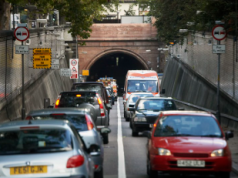In a world where our phones rarely leave our hands and our attention spans are shrinking by the second, a quiet movement is rising: digital minimalism.
This 2025 lifestyle trend isn’t about rejecting technology entirely — it’s about using tech intentionally, eliminating digital clutter, and reclaiming your mental clarity.
As mental health challenges continue to rise in tandem with screen time, people are starting to ask:
What happens when we log off — on purpose?
The answer, it turns out, might just be better focus, more happiness, and a mind that finally feels… quiet.
What Is Digital Minimalism?
Digital minimalism is the practice of simplifying your digital life to focus only on technology that adds genuine value.
Coined and popularized by author Cal Newport, it goes beyond deleting a few apps — it’s a philosophy about how we interact with screens and protect our attention.
The main principles include:
- Reducing mindless scrolling
- Eliminating non-essential notifications
- Consolidating digital tools
- Choosing offline alternatives when possible
- Being present in real-world interactions
Digital minimalists aren’t anti-tech. They’re pro-intentionality.
The Mental Health Crisis Behind the Screens
Studies have made the connection between excessive screen time and anxiety, depression, and burnout abundantly clear.
- A 2024 report by the World Health Organization found that daily smartphone use above 4 hours correlated with increased symptoms of social anxiety and sleep disturbances.
- Social media, particularly image-heavy platforms, continues to be linked to low self-esteem, comparison stress, and FOMO.
Digital minimalism provides a counter-narrative:
What if we curated our digital life the same way we declutter our homes?
The Mental Benefits of Going Digital-Light
People practicing digital minimalism in 2025 report a range of mental and emotional improvements, including:
1. Improved Focus and Productivity
Without the constant ping of notifications, many experience deeper concentration and creative flow.
Work gets done faster. Tasks become more satisfying. The mind starts to feel less fractured.
2. Reduced Anxiety
Cutting back on news, social comparison, and information overload helps lower the body’s cortisol levels (stress hormone).
Suddenly, silence isn’t scary — it’s peaceful.
3. Better Sleep
Late-night scrolling and blue light exposure wreck sleep quality. Going screen-free at least an hour before bed helps regulate your circadian rhythm and improve rest.
4. More Meaningful Relationships
Face-to-face conversation. Eye contact. Uninterrupted meals.
Digital minimalism promotes real-world connection and intentional presence with loved ones.
How People Are Practicing Digital Minimalism in 2025
This isn’t just a fringe idea — it’s a growing lifestyle embraced by everyone from entrepreneurs to students.
Popular methods include:
- Phone-Free Mornings: Many people now avoid screens for the first hour of the day, focusing on journaling, movement, or mindfulness instead.
- Notification Audits: Turning off non-essential alerts across apps — no more dopamine hits from every “like” or headline.
- One-Screen Living: Using a single device (e.g., laptop) for tasks instead of toggling between phone, tablet, and smart watch.
- Analog Substitutes: Replacing digital to-dos with paper planners, e-books with print books, and podcasts with walks in silence.
Apps like Forest, Freedom, and Minimalist Phone are gaining traction — ironically, by helping users use tech less.
Digital Minimalism Meets Workplace Culture
In 2025, digital minimalism is also influencing how companies operate.
- Email-Free Fridays are now common in startups and creative teams.
- Slack-Silence Windows protect employee focus time.
- “Right to Disconnect” laws in countries like France and Germany are inspiring global norms around after-hours work boundaries.
The message is clear: burnout isn’t a badge of honor — clarity is the new productivity.
Notable Figures Embracing the Movement
Several public figures are bringing digital minimalism into the spotlight:
- Cal Newport: Author of Digital Minimalism, his TED Talks and podcast appearances continue to gain traction.
- Emma Watson: Known for taking extended social media breaks and promoting intentional living.
- Jack Dorsey (ex-Twitter CEO): Advocates for regular digital detoxes and silent retreats.
- Ali Abdaal: The productivity YouTuber now promotes reduced screen time and analog planning for better focus.
Their influence is helping normalize the idea that less screen time is powerful — not primitive.
Tips for Getting Started with Digital Minimalism
Ready to dip your toes into digital minimalism? Start with small, manageable steps:
- Digital Declutter: Uninstall apps you don’t use. Keep only what serves a purpose.
- Set Time Limits: Use screen time settings to restrict social media or streaming use.
- Create No-Phone Zones: Ban phones from the bedroom or dinner table.
- Batch Digital Tasks: Check email twice a day — not every 10 minutes.
- Experiment with Sabbaths: Try one tech-free day per week and observe how it feels.
Remember, the goal isn’t to suffer — it’s to create space for what matters.
Final Thought: Tech Isn’t the Enemy — Distraction Is
Digital minimalism isn’t about escaping the modern world.
It’s about reclaiming your attention, protecting your mental space, and designing a life where technology is a tool — not a trap.
In 2025, mental health isn’t just about therapy or medication.
It’s also about turning off the noise — and finally being able to hear yourself think.









